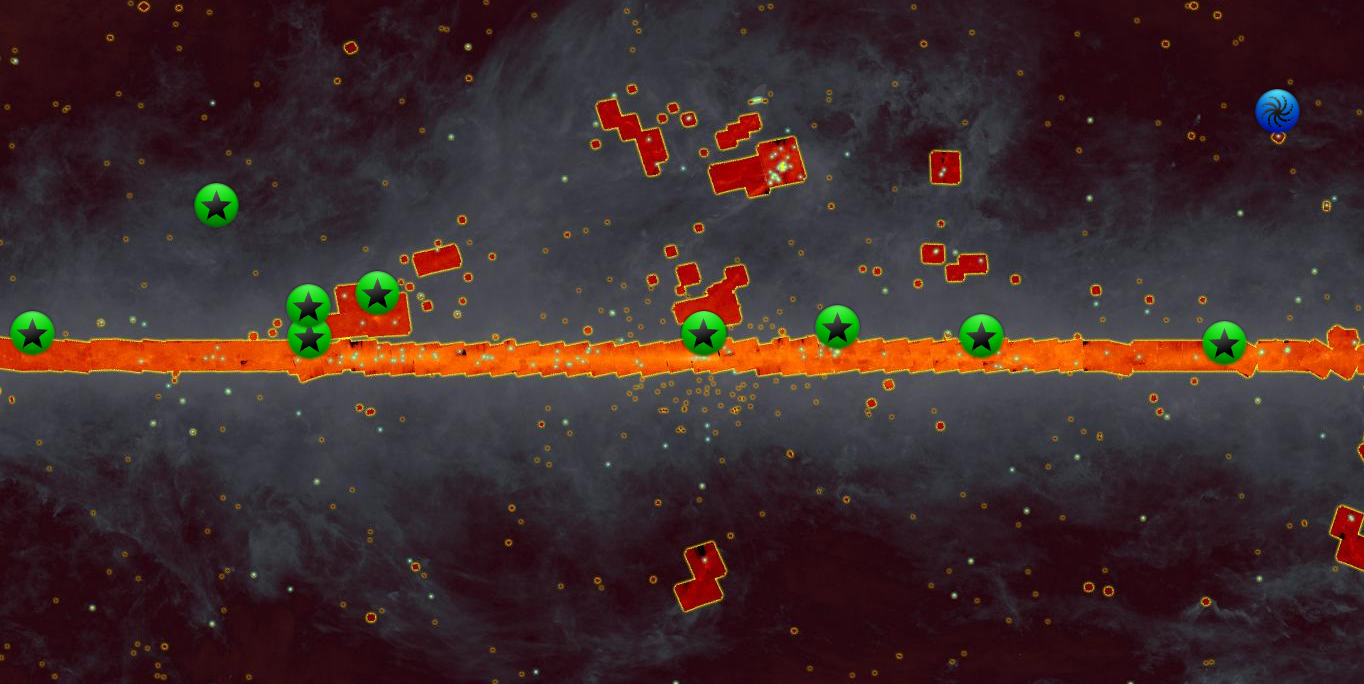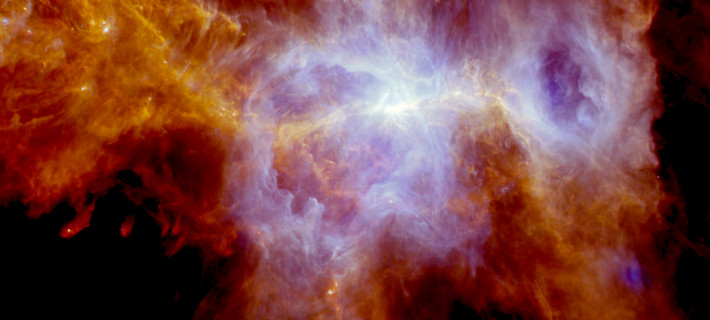The graphic below shows the Herschel results to date. Click on them to see pictures or get more information. Click here to go full-screen
Author archives: chrisnorth
Orion A
Basic Information What is this? A star forming region in Orion Where is it in the sky? In the constellation of Orion How big is it? The clump is around 10,000 larger than the Earth’s orbit around the Sun, making it about 100 time larger than the Sun’s planetary system How far away is it? …
5 years of Herschel
May 2014 marked the 5th anniversary of the launch of the Herschel Space Observatory. To mark the occasion, this month’s astronomy instalment of Pythagoras’ Trousers included interviews with a few people of the Herschel team about their experiences. The interviews all took place in Paris, where many members of the mission and instrument teams were …
Royal Astronomical Society recognition for SPIRE instrument
The Royal Astronomy Society (RAS) has awarded its 2014 Group Achievement Award to the team behind the Herschel Space Observatory’s SPIRE instrument. The award represents recognition by the astronomical community of the outstanding success of the SPIRE instrument, which observed the Universe at far infrared wavelengths, a few hundred times longer than the wavelengths of …
Continue reading “Royal Astronomical Society recognition for SPIRE instrument”
SPIRE instrument wins Sir Arthur Clarke award
The team behind Herschel’s SPIRE instrument has been awarded the 2013 Sir Arthur Clarke Award for academic study and research. SPIRE is one of three instruments on Herschel, which was launched on 14 May 2009 and operated until the end of its scientific mission on 29 April 2013. The award is in recognition of the scientific achievements of the SPIRE instrument, …
Continue reading “SPIRE instrument wins Sir Arthur Clarke award”
Supernova 1987a
Basic Information What is this? The region around a supernova which exploded in 1987, called SN1987A Where is it in the sky? In the Large Magellanic Cloud How big is it? The shell of matter around the star is expanding, and is around a light year across How far away is it? Around 160,000 light …
Herschel Spacecraft is turned off
At 12:25 GMT the Herschel spacecraft was turned off for the last time, ending the operational phase of the mission. The scientific observations had ended on 29th April when the on-board supply of liquid helium was exhausted. But while the spacecraft is no longer operating, there is much work left to do on the data …
Merging Galaxy HXMM01
Basic Information What is this? Two massive galaxies in the process of merging in the early Universe, seen beyond two much nearer galaxies Where is it in the sky? In the constellation of Cetus How big is it? The two merging galaxies are 60,000 light years apart, and will result in a galaxy ten times …
Sagittarius A*
Basic Information What is this? The region around the supermassive black hole at the centre of our Galaxy Where is it in the sky? In the constellation of Sagittarius How big is it? The black hole is 6 million times as massive as our Sun How far away is it? 26,000 light years away, in …
Herschel loses its cool
The Herschel Space Observatory has exhausted its supply of liquid helium coolant, after three and a half years of scientific observations. Using Herschel data, astronomers have already made ground-breaking discoveries about the formation and evolution of stars, galaxies and planets. But this has only scratched the surface, and there is far more still to come …





